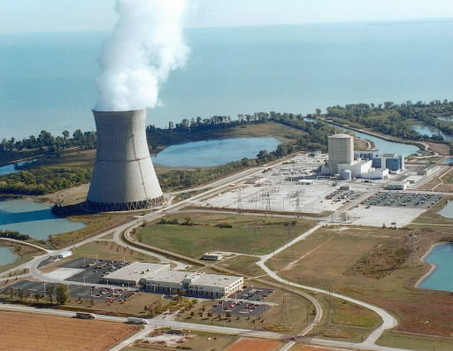Nuclear Reactors 123 - Many U.S. Nuclear Power Stations are not in Compliance with NRC Fire Safety Rules
In 1975 at the Brown's Ferry nuclear power plant in Alabama, they were having problems with electrical wiring below the control room. There were air leaks in the cable spreading room and engineers were working to repair the leaks with spongy foam rubber. One of the men was using a candle to detect the air leaks. When he held the candle too close to a piece of the foam rubber, it burst into flame. The fire spread and destroyed a lot of the wiring including the controls for the emergency cooling system. There was almost a meltdown in the core of the reactor.
In 1980, the Nuclear Regulatory Commission drafted and adopted new rules for comprehensive fire protection to prevent any more fires like the one at Brown's Ferry. Over the next twenty years, the NRC discovered that about half of the one hundred and four nuclear power plants in the U.S. did not comply with the new fire safety standards. Some of the plants that were not in compliance would required very expensive changes that would have afforded little more protection. The U.S. nuclear industry resisted the demand for compliance.
In response to the industry resistance to the new standards, the NRC came up with new rules in 2004 that gave the owners of nuclear power plants an option. The plant operators could bring their installations into compliance with the 1980 NRC fire safety rules or they could opt to meet the National Fire Protection Association's (NFPA) standards for nuclear power plants that were based on performance. In contrast to the 1980 rules that state what plants are required to do and how those tasks should be accomplished, the alternative NFPA standards points out what the end result of changes should be but they do not explain exactly what the nuclear plants have to do to meet the NFPA standards. It is left to the individual nuclear power plants to assess the risk of fire throughout the plant and then to make procedural and/or physical changes to mitigate the risks. The two sets of standards are obviously different in their details but the end result of both standards is to insure that the nuclear power plant would be safer from the risk of fires.
In 2005, about four dozen nuclear power plants notified the NRC that they were planning on moving to the NFPA standards. Implicit in these notifications is the admission that those nuclear power plants were not in compliance with the 1980 NRC standards despite the fact that twenty five years had passed since the new NRC standards were adopted. Analyses of nuclear plant risks show that about half of the risk of triggering a nuclear core melt down can results from fires even taking the new fire safety standards into account.
FirstEnergy has petitioned the NRC for more time to complete the exhaustive reviews and analyses that the NRPA standards require before any work can be done at their Davis-Besse Nuclear Power Station in Ohio. FirstEnergy says that they can finish the review process by 2015. Then they want to wait until the NRC issues a ruling on the NRPA plan before starting any work. If the NRC accepts their proposal, that means that there will be no work on mitigating fire risks before 2017 at the earliest. They want to continue to violate NRC rules for another three years at least. This is the sort of lax regulation that makes me nervous. A quarter of the nuclear power plants in the U.S. are at greater risk for fires and meltdowns than they would be if the NRC did not allowed them to drag their feet for decades before complying with improved fire safety standards. If a fire at one of these plants results in a serious nuclear accident, just remember that it could have been prevented.
Davis-Besse Nuclear Power Station:
